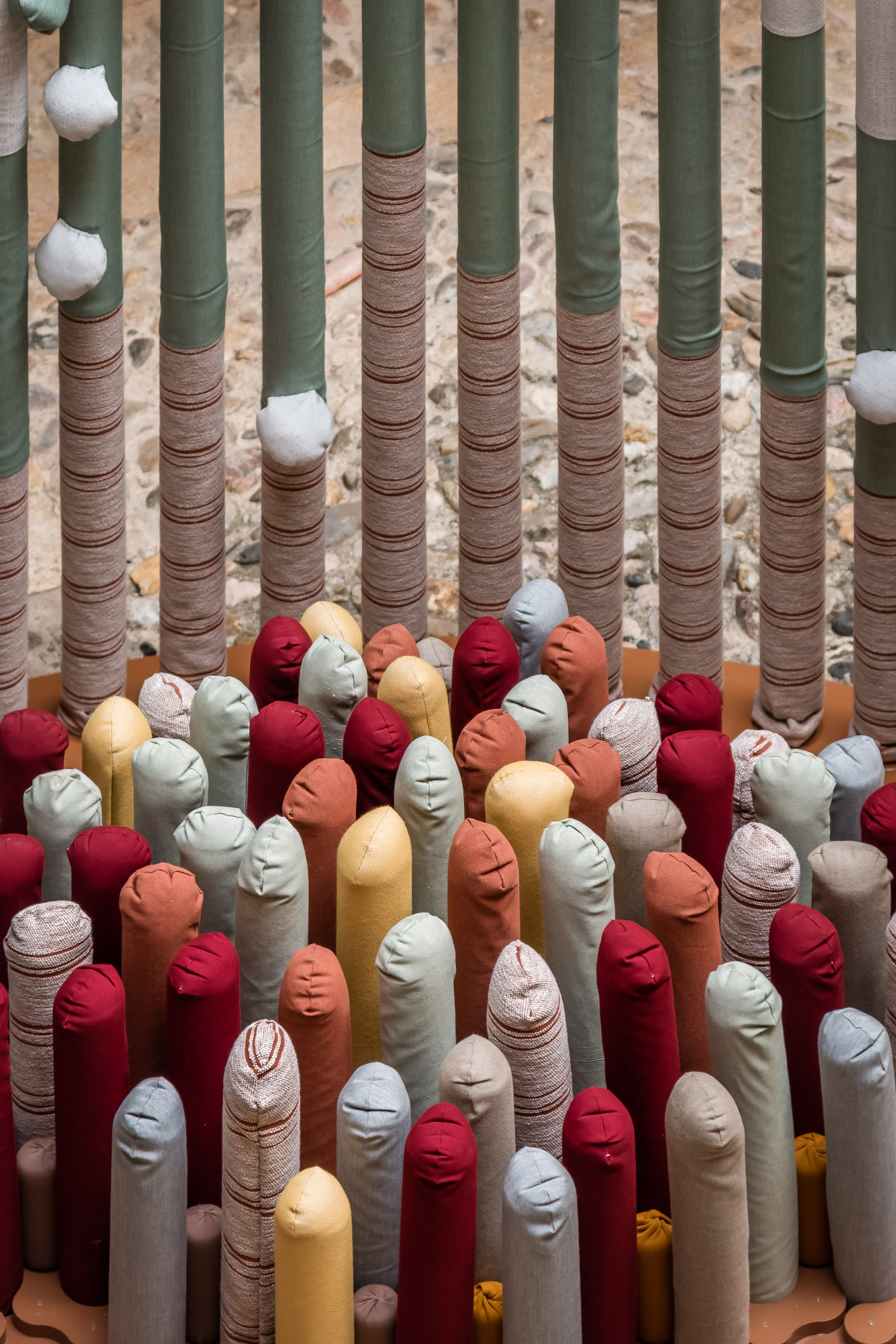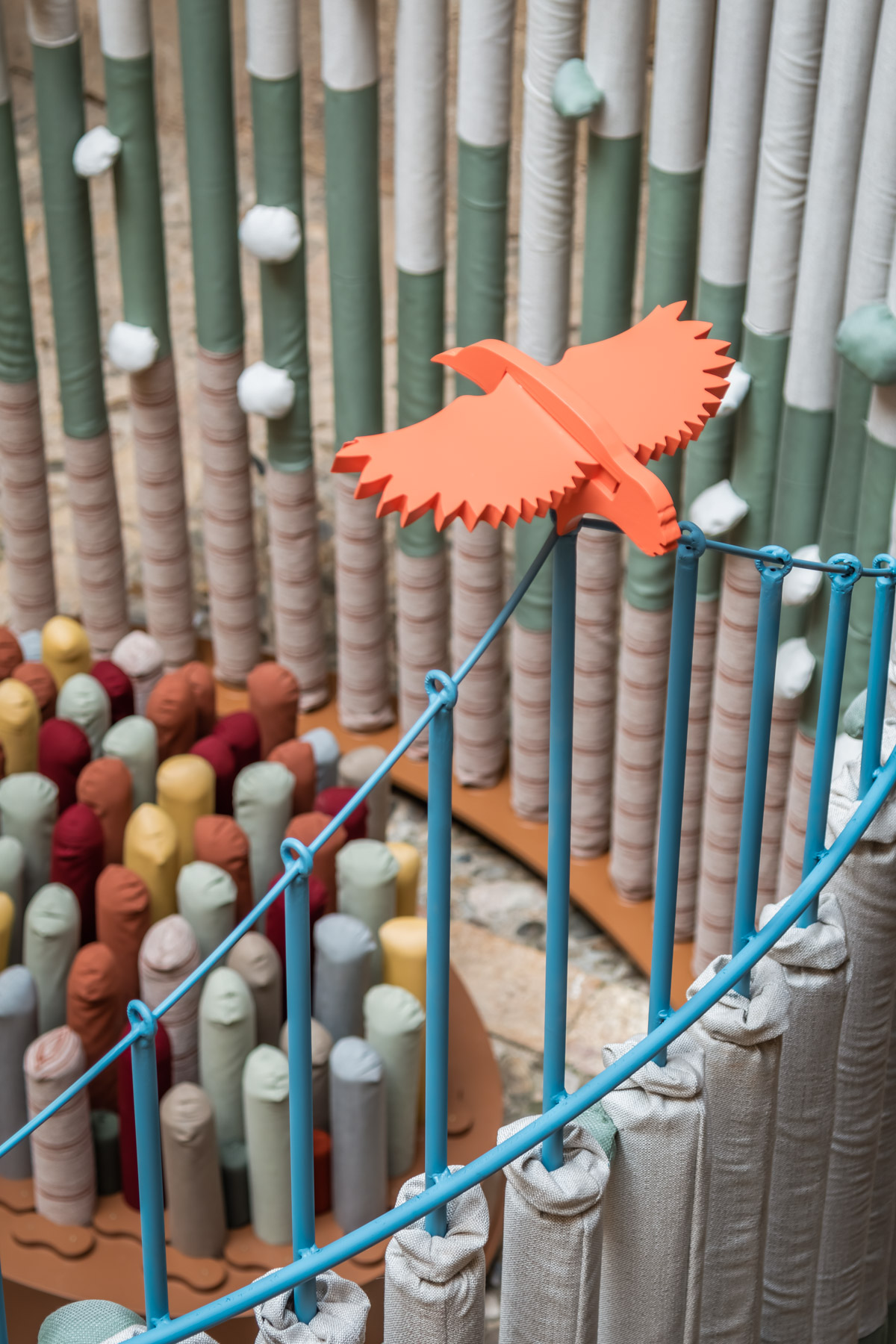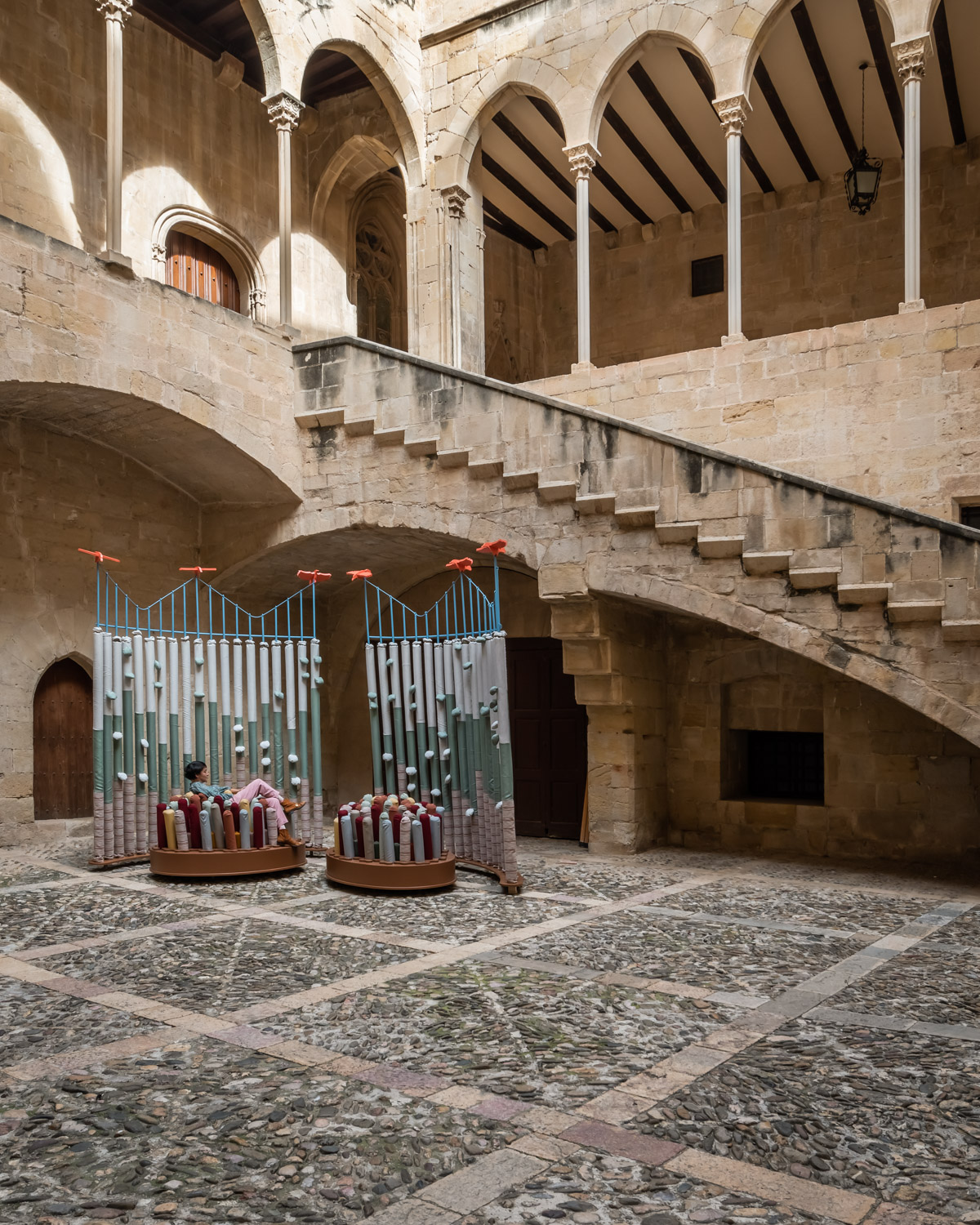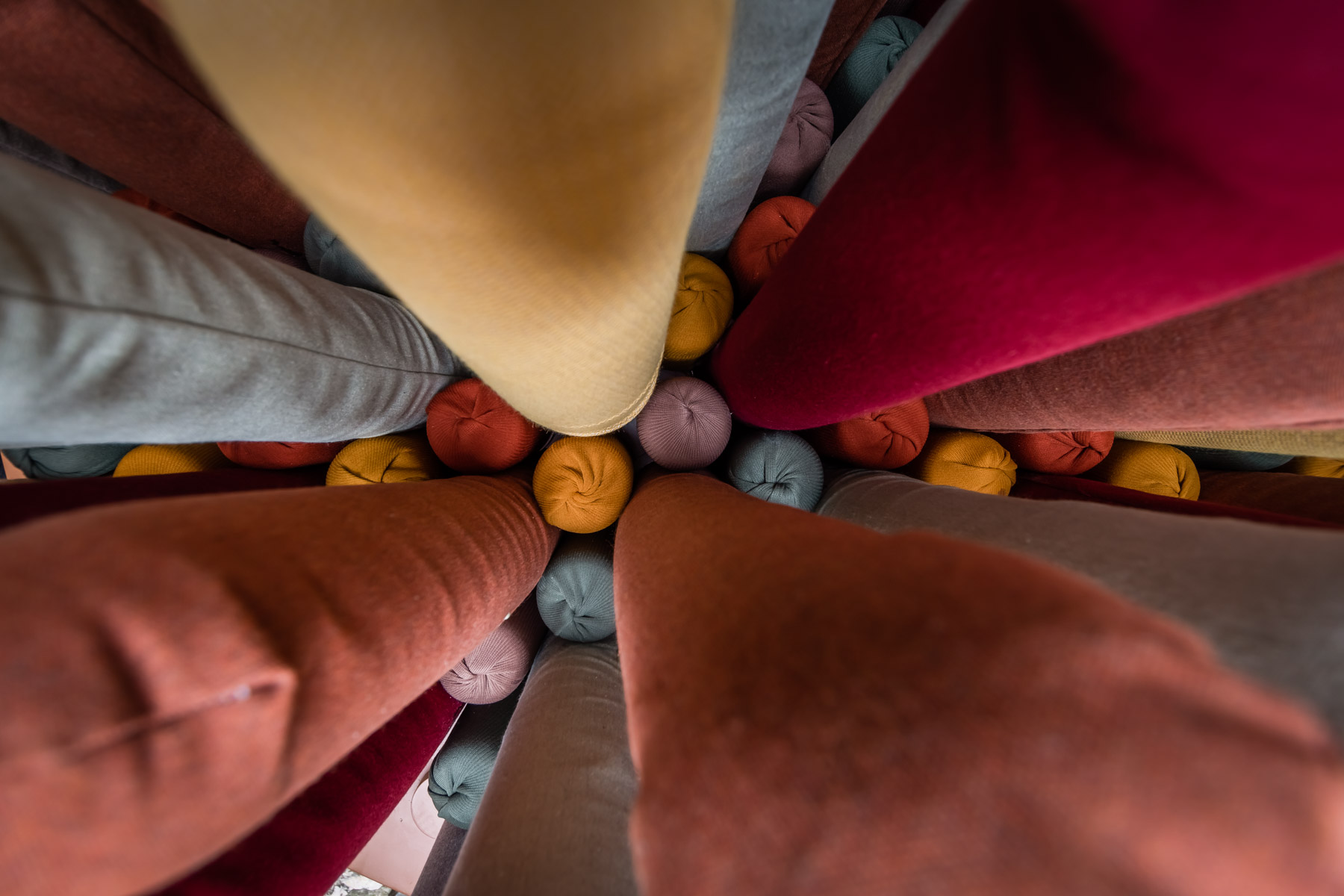A tu amparo
This proposal explores the concept of protection and how architectural spaces such as atriums, courtyards, and porticoed areas have always been conceived as places of shelter, where solitude aids in healing.
Throughout history, various representations, such as the Virgin with her mantle held by cherubs, birds, or winged beings, have symbolized protective figures that create a safe and comforting space under their shelter. These images suggest that nature and the universe join forces to offer protection and build a place where peace can be found.
The art installation seeks to explore ideas of heroism linked to care and healing, contrasting the abundant epic narratives where the heroes of our world are not mothers but conquerors, military leaders, or rulers. It aims to remind us that, now more than ever, we need to be sheltered; to have a safe space where we can reconnect with others and our surroundings. Additionally, it is a tribute to motherhood and the importance of having a comforting embrace to return to whenever we need it.
Izaskun Chinchilla








THE AUTHORS
Izaskun Chinchilla holds a PhD in Architecture from ETSAM and has been leading the firm Izaskun Chinchilla Arquitectos since 2001. She is a Professor of Architectural Practice at The Bartlett School of Architecture (London) and a Visiting Professor at Hong Kong University. She has been recognized by RIBA as an Honorary Foreign Member, and her contribution to architecture was acknowledged with an Honorable Mention at the Arc Vision Prize 2013, which highlights the careers of female architects worldwide.
Her proposals have been widely awarded and exhibited in prestigious spaces such as SCI Arc Los Angeles, the Venice and São Paulo Biennales, LIGA gallery (Mexico), the London Roca Gallery, La Casa Encendida (Madrid), the Teruel Museum, the Centre d’Art la Panera (Lleida), and at various Official Colleges of Architects and architecture universities, among others.
Izaskun has extensive experience as a teacher, researcher, and speaker at national and international institutions. She is also the author of the book The Caring City, published by Actar.
As an architect, she advocates a strong commitment to innovation; she proposes multidisciplinary exercises where, through ecology, sociology, or science, architecture distances itself from stylistic discourse and reconnects with the complexity of life in the contemporary world.